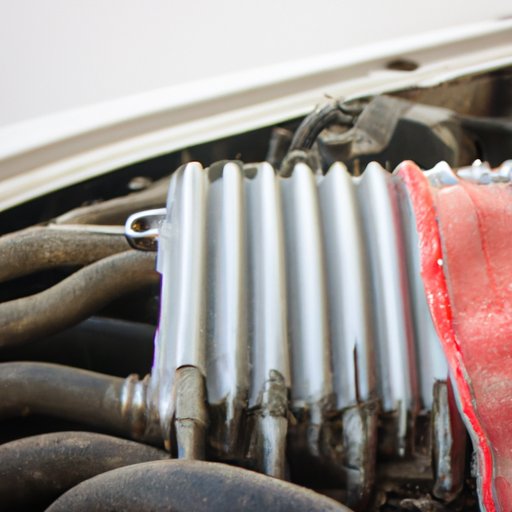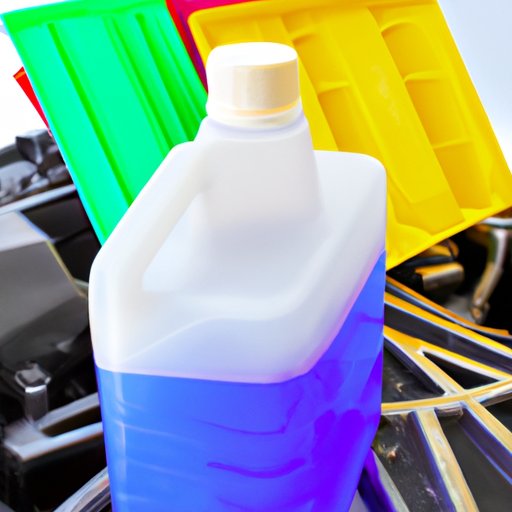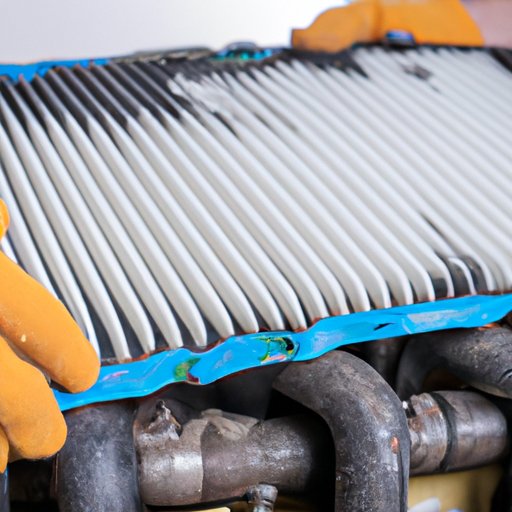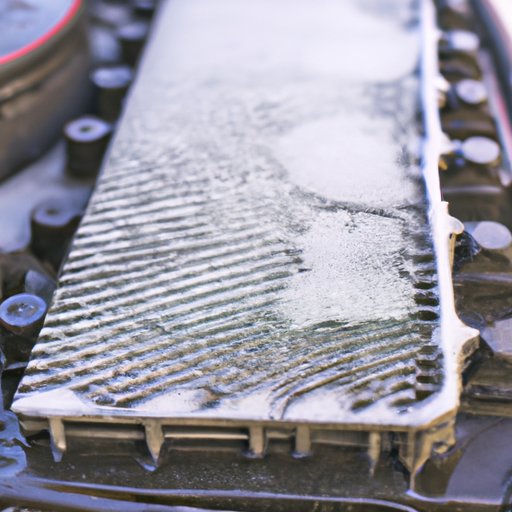Introduction
A car radiator is an essential component of any vehicle’s cooling system. Its purpose is to keep the engine from overheating by dissipating the heat from the hot coolant fluid as it passes through the radiator’s core. This article will explain exactly how does a car radiator work, as well as provide some helpful tips for keeping your car’s radiator in peak condition.
Explaining the Parts and Function of a Car Radiator
The primary purpose of a car radiator is to keep the engine cool. It works by transferring heat away from the hot coolant that is circulated throughout the engine. The heat is then transferred to the air passing through the radiator’s core. This process is known as heat exchange.
The basic components of a car radiator include the core, the fan, the radiator cap, the hoses, and the coolant. The core is composed of thin metal fins that are stacked together and arranged in a grid-like pattern. These fins help to maximize the surface area available for heat exchange. The fan is used to draw air over the radiator’s core, which helps to accelerate the heat transfer process. The radiator cap is used to maintain the pressure in the cooling system, while the hoses connect the radiator to the engine block and the coolant reservoir.
A Step-by-Step Guide to Understanding How a Car Radiator Works
To understand how a car radiator works, it is important to understand the role of the coolant fluid. The coolant fluid is responsible for carrying the heat away from the engine and transferring it to the radiator’s core. The coolant is able to flow freely between the engine block and the radiator thanks to the hoses. The fan is then used to draw air over the radiator’s core, which helps to dissipate the heat faster.
Once the coolant has been heated up by the engine, it is sent to the radiator where it is cooled down by the air passing through the core. The heat is then dissipated into the atmosphere as the coolant passes through the radiator. As the coolant passes through the radiator, it is constantly being cooled down until it reaches the temperature of the outside air. The radiator cap serves to maintain the pressure in the cooling system, ensuring that the coolant is not lost due to evaporation or leaks.
Once the coolant has been cooled down, it is sent back to the engine block where the process starts all over again. This process of heat exchange is what makes your car’s engine run efficiently and prevents it from overheating.
How Heat Exchange Powers Your Car’s Radiator
The temperature of the coolant plays an important role in the heat exchange process. When the engine is cold, the coolant is at a lower temperature and therefore flows slowly through the radiator. As the engine warms up, the coolant heats up and begins to flow more quickly. This increases the rate of heat exchange and helps to keep the engine running at its optimal temperature.
The thermostat is another important part of the cooling system. It is responsible for regulating the temperature of the coolant. If the coolant gets too hot, the thermostat will open and allow more coolant to flow through the radiator. If the coolant gets too cold, the thermostat will close and prevent the coolant from flowing through the radiator.
A Layman’s Guide to Cooling System Maintenance
Regular maintenance of your car’s cooling system is essential for ensuring its proper functioning. Checking for leaks, replacing worn out hoses and belts, and flushing the system regularly are all important steps in maintaining your car’s radiator. It is also important to check the level of the coolant in the reservoir on a regular basis and to replace the coolant when needed.
In addition to these basic steps, it is also important to inspect the radiator cap and the hoses to make sure they are not leaking or blocked. If you notice any signs of corrosion or wear, it is important to have them repaired or replaced immediately.

The Benefits of Regular Car Radiator Flushes
Flushing your car’s radiator on a regular basis is one of the most effective ways to prolong its life and ensure that it is working properly. A radiator flush removes any dirt and debris that may have accumulated in the radiator and helps to enhance the efficiency of the cooling system. Regular radiator flushes can also help to prevent any future problems from occurring.

An Overview of Automotive Coolant and Antifreeze
Automotive coolant and antifreeze are essential components of any car’s cooling system. Coolant is responsible for carrying the heat away from the engine and transferring it to the radiator’s core, while antifreeze helps to prevent the coolant from freezing in cold weather. Different types of coolants and antifreezes are available on the market, and it is important to choose the right type for your vehicle.
When adding coolant or antifreeze to your car’s cooling system, it is important to remember to use the correct mixture ratio. Generally speaking, a 50/50 mix of coolant and water is recommended for most vehicles. However, this ratio may vary depending on the manufacturer of your vehicle.

Common Problems with Car Radiators and How to Fix Them
Although car radiators are generally reliable, there are certain issues that can arise which can cause them to malfunction. Common problems include corrosion, blocked hoses, and leaking radiators. Corrosion can be caused by a buildup of dirt and debris in the radiator, while blocked hoses can lead to restricted coolant flow. Leaking radiators can be caused by a faulty radiator cap or a worn out hose.
If you suspect that your car’s radiator is experiencing any of these problems, it is important to have it inspected by a professional mechanic. They will be able to diagnose the issue and recommend the best course of action for fixing it.
Conclusion
In conclusion, understanding how does a car radiator work is essential for keeping your vehicle running smoothly and preventing it from overheating. By familiarizing yourself with the different components of the radiator and how they work together, you can ensure that your car’s cooling system is operating at its peak efficiency. Additionally, regular maintenance and radiator flushes can help to prolong the life of your car’s radiator and keep it running smoothly. Finally, if you do experience any problems with your car’s radiator, it is important to have it inspected and repaired by a qualified mechanic.
(Note: Is this article not meeting your expectations? Do you have knowledge or insights to share? Unlock new opportunities and expand your reach by joining our authors team. Click Registration to join us and share your expertise with our readers.)
